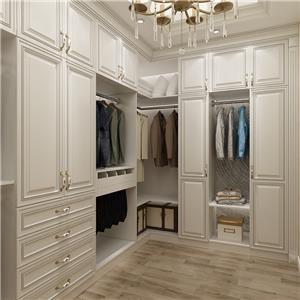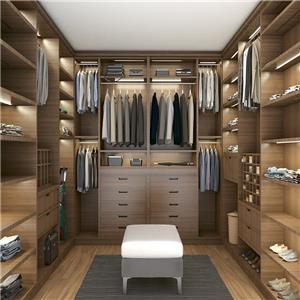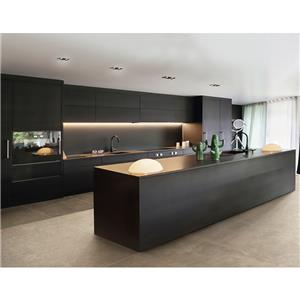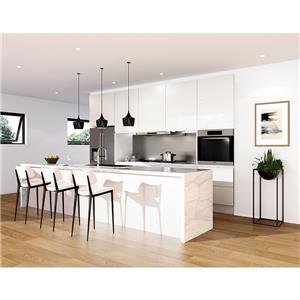Particleboard Kitchen Cabinet: Pros and Cons
Particleboard is a type of engineered wood that is widely used in the furniture industry, including in the manufacture of kitchen cabinets. Particleboard kitchen cabinets are a popular choice for many homeowners due to their affordability, durability, and versatility. Like any material, particleboard also has its pros and cons.
Quick look at the pros and cons of particleboard cabinet
| Pros of particleboard kitchen cabinet | Cons of particleboard kitchen cabinet |
|---|---|
| Cost-effective | Not as Strong as Solid Wood |
| Variety of finishes | Susceptible to Moisture |
| Durable | Not Eco-Friendly |
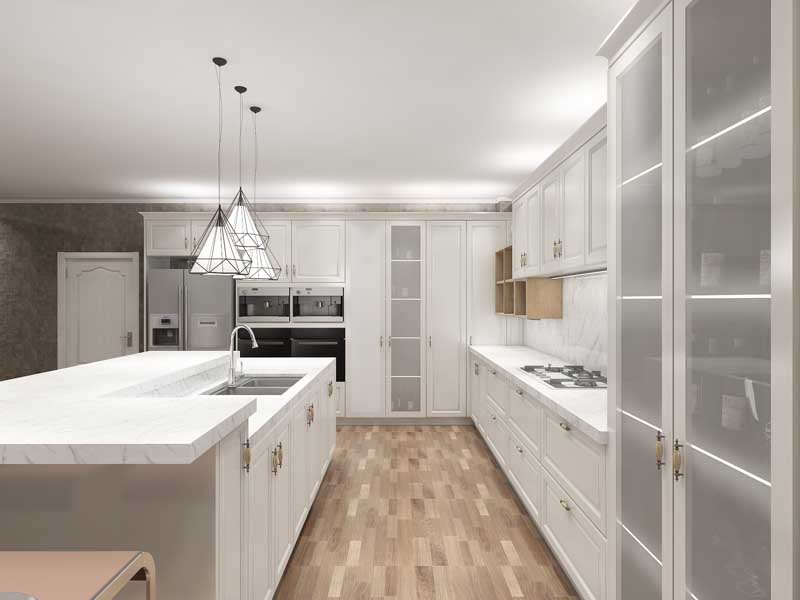
Kitchen cabinet layout for your reference: Modern shaker kitchen cabinet
Pros:
Cost-effective
Particleboard is a manufactured wood product, and as such, it is less expensive than solid wood. This means that particleboard kitchen cabinets are generally more affordable than their solid wood counterparts. This makes them an excellent option for those on a tight budget or for those who are looking to remodel their kitchen without breaking the bank.
Variety of finishes
Particleboard can be finished with a wide range of materials, including veneer, laminate, and paint. This means that you can achieve the look you want for your kitchen cabinets without spending a fortune. Particleboard cabinets are available in a variety of colors and finishes, so you are sure to find one that matches your kitchen decor.
Durable
While particleboard is not as strong as solid wood, it is still a durable material. When properly constructed and finished, particleboard kitchen cabinets can last for many years without showing signs of wear and tear. Additionally, particleboard cabinets are less likely to warp or crack than solid wood cabinets.
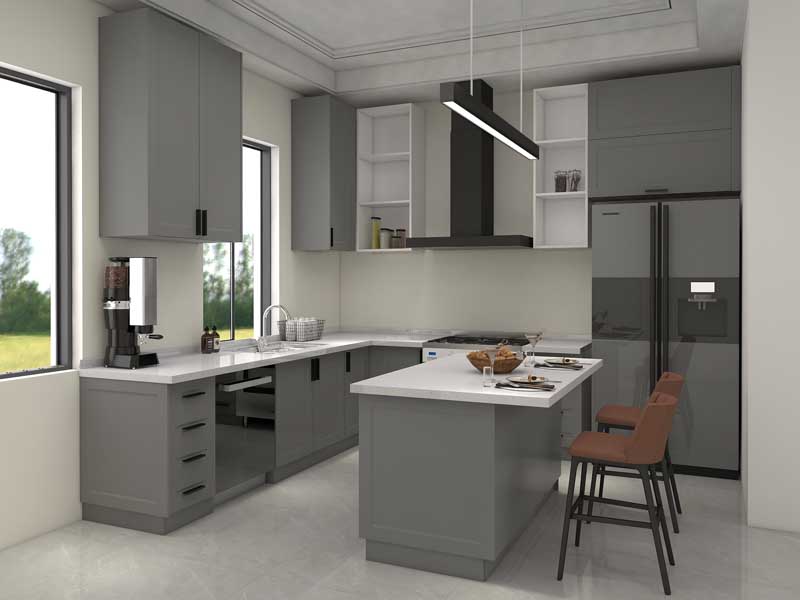
Kitchen cabinet layout for your reference: High gloss kitchen cabinet
Cons
Not as Strong as Solid Wood
While particleboard is a durable material, it is not as strong as solid wood. This means that it may not be able to support heavy loads or withstand extreme impacts, which can lead to damage or breakage over time.
Susceptible to Moisture
Particleboard is made of wood particles that are bound together with adhesives, which can break down when exposed to moisture. This means that particleboard kitchen cabinets can be susceptible to water damage if they are not properly sealed and finished.
Not Eco-Friendly
Particleboard is made from wood particles that are often sourced from fast-growing trees, such as pine and poplar. This means that the production of particleboard may not be as eco-friendly as other materials, such as solid wood or bamboo, which are sourced from sustainable forests.
Conclusion
Particleboard kitchen cabinets have their pros and cons, and it's up to each homeowner to weigh these factors and decide whether or not they are the right choice for their kitchen. While particleboard may not be as strong or eco-friendly as other materials, it is still a highly versatile and affordable option that can provide a durable and stylish solution for kitchen cabinets. Ultimately, the decision will depend on your personal preferences, budget, and home décor needs.
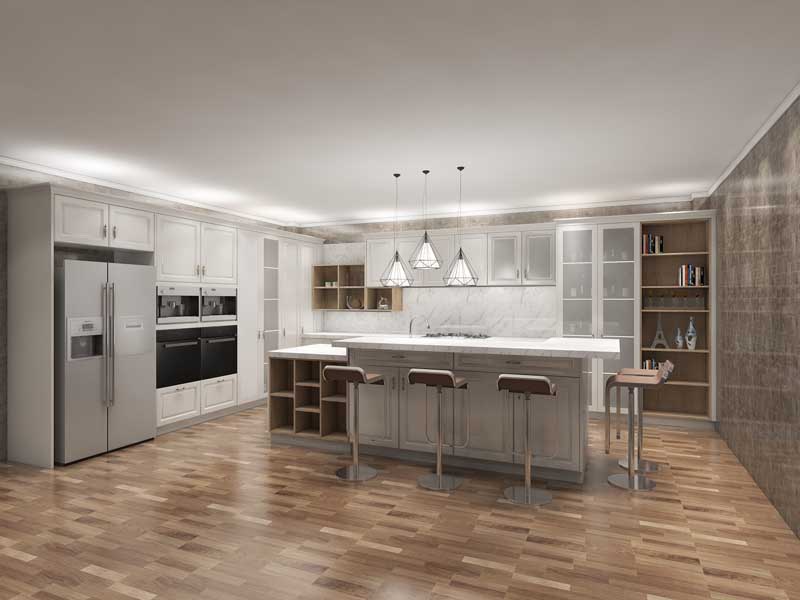
Kitchen cabinet layout for your reference: Modern style matt kitchen cabinet
Types of Particleboard
Particleboard is a popular type of engineered wood product that is made from wood chips, sawdust, and other wood residuals. It is an affordable and eco-friendly alternative to solid wood that is used in a variety of applications, including furniture, flooring, and cabinetry. Particleboard is available in various types, each with unique characteristics and advantages. In this article, we will discuss the different types of particleboard and their uses.
Standard Particleboard
Standard particleboard, also known as regular particleboard, is the most commonly used type of particleboard. It is made by compressing wood particles and resin together under heat and pressure. Standard particleboard is available in a range of thicknesses and densities and is suitable for a wide range of applications, including furniture, cabinetry, and flooring. However, it is not suitable for areas with high humidity or moisture as it can swell and warp.
Moisture-Resistant Particleboard
Moisture-resistant particleboard, also known as MR particleboard, is designed to withstand moisture and humidity. It is made using a special resin that makes it more resistant to water absorption than standard particleboard. MR particleboard is suitable for use in areas with moderate humidity, such as kitchens and bathrooms, but it is not recommended for areas with direct exposure to water.
Fire-Rated Particleboard
Fire-rated particleboard, also known as FR particleboard, is designed to resist fire and flames. It is made by adding fire retardants to the wood particles and resin during the manufacturing process. FR particleboard is commonly used in buildings where fire safety is a concern, such as hospitals, schools, and commercial buildings.
Melamine-Resin Particleboard
Melamine-resin particleboard, also known as melamine board, is a type of particleboard that has a thin layer of melamine paper applied to its surface. The melamine layer provides a durable and scratch-resistant finish that is easy to clean and maintain. Melamine board is commonly used in furniture, cabinetry, and interior design applications.
High-Density Particleboard
High-density particleboard, also known as HDF, is a type of particleboard that has a higher density and stronger structure than standard particleboard. It is made by compressing the wood particles and resin at a higher pressure and temperature. HDF is suitable for applications that require high strength and durability, such as flooring, wall paneling, and furniture.
In conclusion, particleboard is an affordable and versatile alternative to solid wood that is available in various types to suit different applications. Standard particleboard is the most commonly used type, while moisture-resistant particleboard, fire-rated particleboard, melamine-resin particleboard, and high-density particleboard are suitable for specific applications where added durability, strength, or resistance to moisture, fire, or wear and tear is required. When selecting the right type of particleboard for your project, it is important to consider its intended use and the environmental conditions it will be exposed.
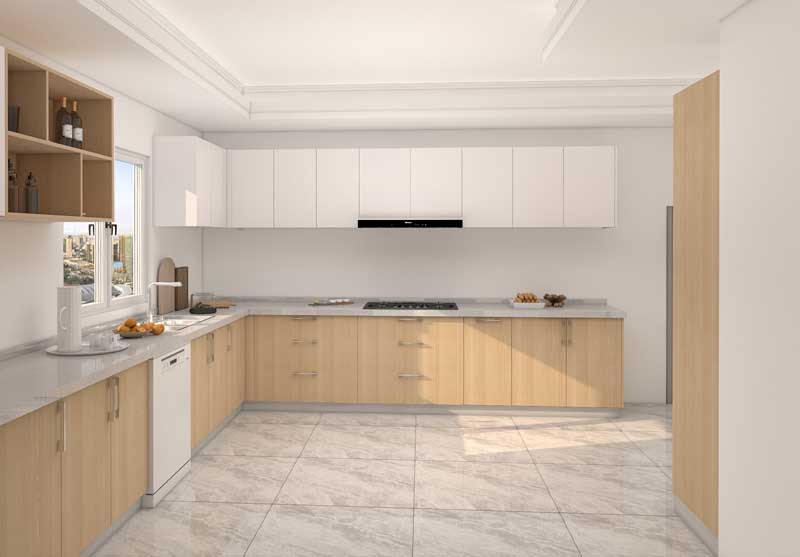
Kitchen cabinet layout for your reference: Wood grain kitchen cabinet design
Kitchen cabinet FAQs
Is particle board or plywood better for kitchen cabinets?
It really depends on your needs and budget. Particle board is typically more affordable than plywood, but plywood is more durable and can be painted more easily. Both materials can be used to make strong and functional kitchen cabinets.
Is particle board better than MDF for kitchen cabinets?
It really depends on your preferences and budget. Particle board is usually cheaper than MDF, but it is also less durable and doesn't hold up as well over time. MDF is more expensive but is also more durable and can hold up better in a kitchen environment.
Related articles
Melamine Kitchen Cabinetry: Pros and Cons
Advantages and disadvantages of UV kitchen cabinets
PVC Sheet Kitchen Cabinets: Advantages and Disadvantages
Stainless Steel Kitchen Cabinet: Pros and Cons
Plywood Kitchen Cabinet: Pros and Cons
MDF Kitchen Cabinet: Pros and Cons
Solid Wood Kitchen Cabinet: Pros and Cons

